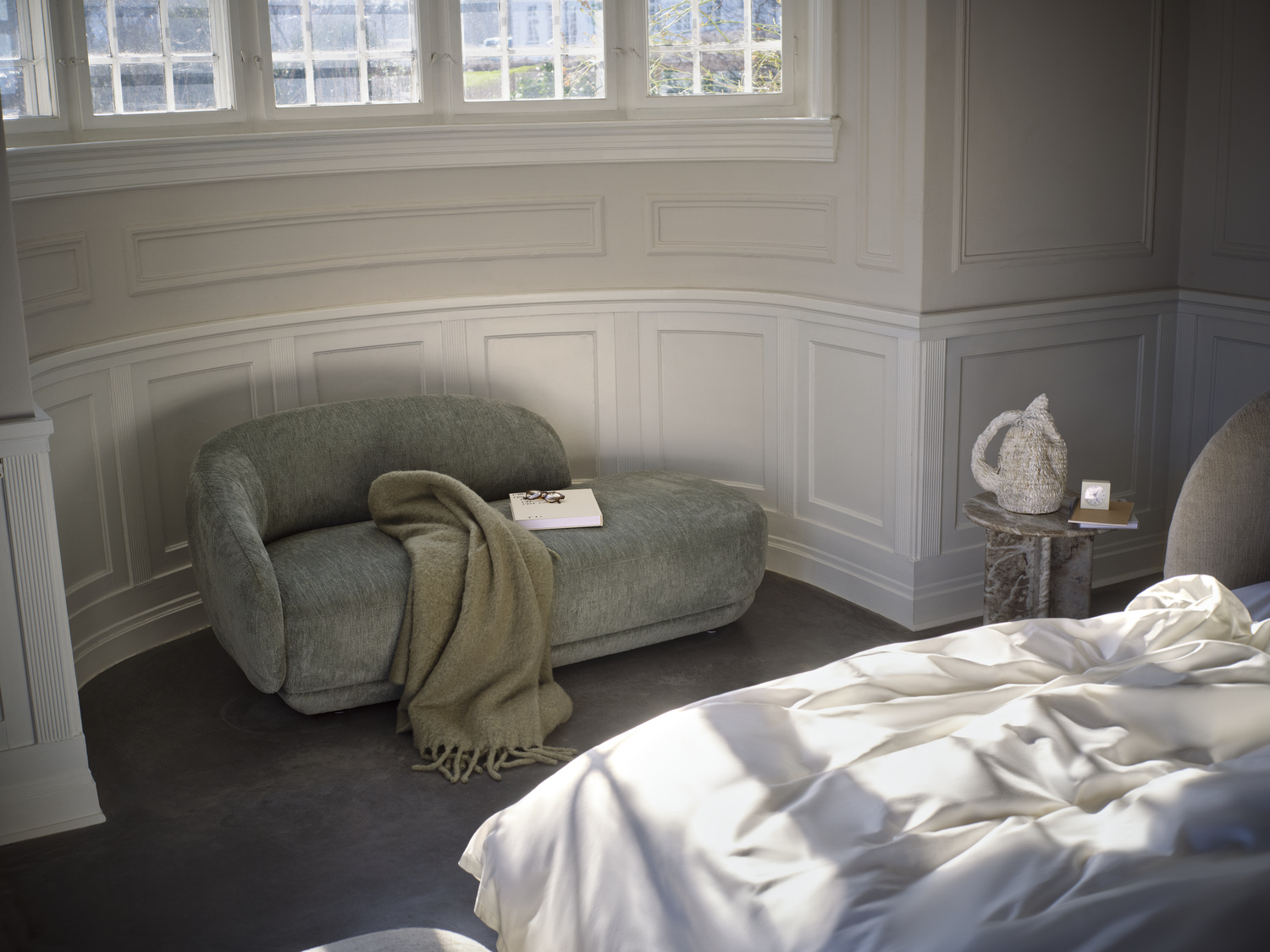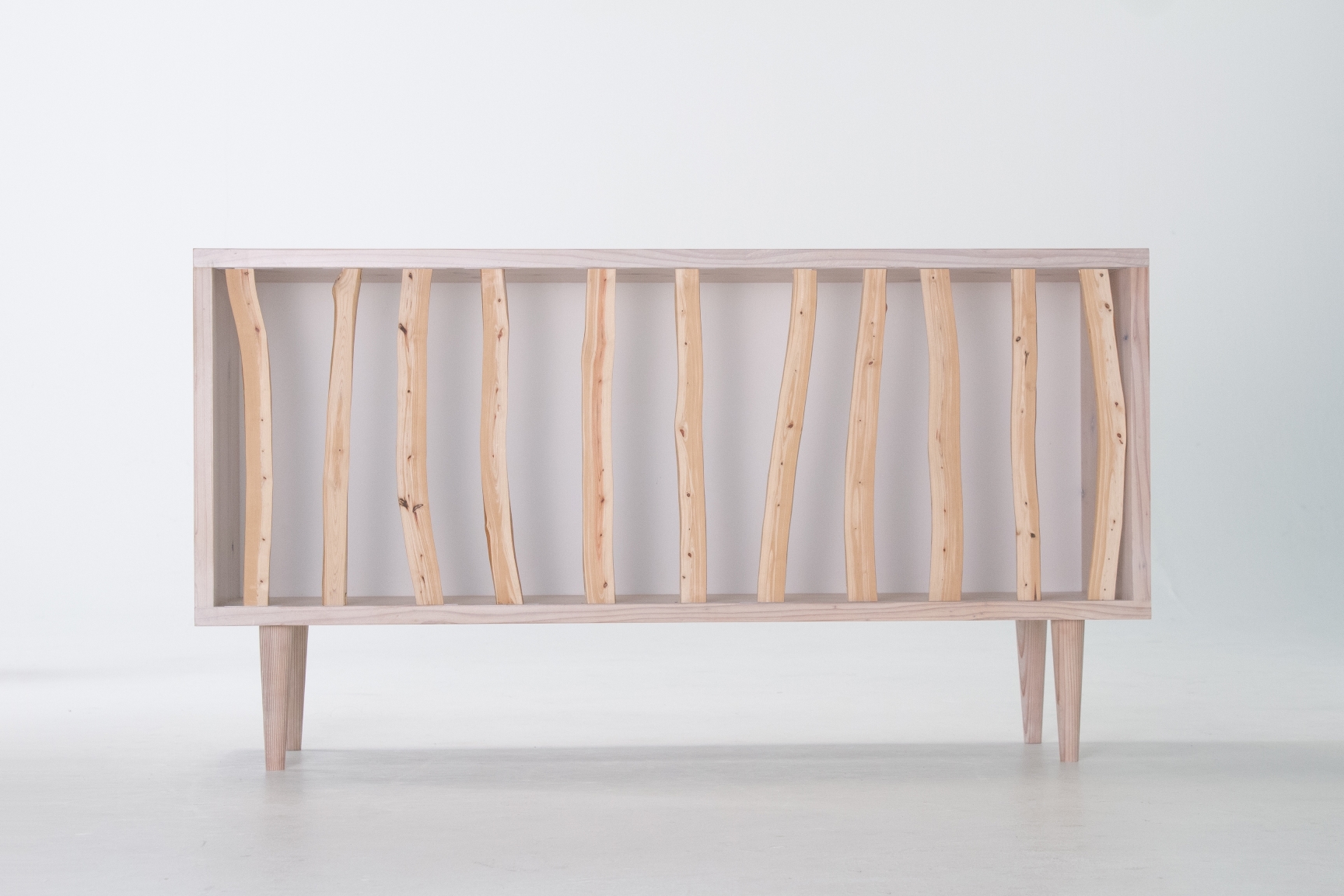Taishi Sugiura’s adjustable cabinet, Hayashi, allows users to choose how they want to use and present the product. Made from thinned Japanese cypress branches spread across the cabinet frame, Hayashi enables the user to easily transform the cabinet. By moving the branches left and right, customers not only change the overall aesthetic, creating smaller or wider gaps in the cabinet front, but also adjust the functionality of the piece. If users have an item that’s used frequently, they can leave it in the open part of the cabinet for easier access. But if the item in the cabinet is rarely used, they can hide it conveniently behind narrow-positioned cypress branches.
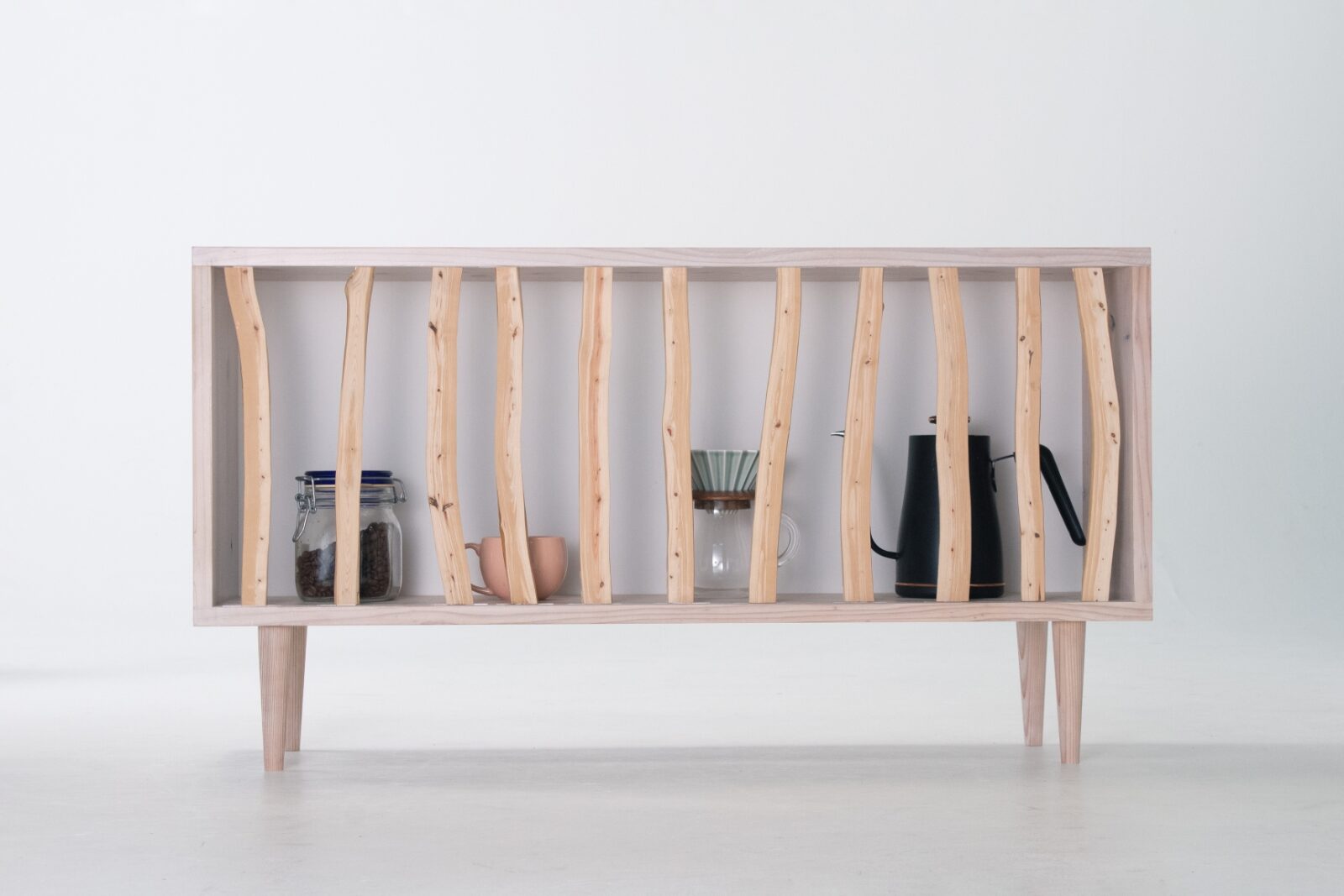
The Art of Taishi Sugiura
The design is inspired by the popular Japanese use of space, separating one large room with a set of sliding doors known as a furoshiki or shoji. It brings the flexible use of space into furniture design. Much like a partition through sliding doors, the designer uses branches to split the cabinet space. Japan, a country full of planted forests of cypress and cedar, also inspires the material. To maintain these forests, thinning is used, removing some trees and branches to improve the growth of the remaining trees.
This process leaves tree branches (considered unvaluable) in the forests, causing damage to the environment. Sugiura uses these thinned cypress branches as the main building material of his design. Their raw, unpolished appearance with cuves and thigh grain presents a different look and feel from the carefully polished industrial wood. The naturally straight and just slightly curved branches extend freely, evoking the quiet, serene beauty of Japanese forests. The careful selection of material engages all five senses while bringing a breath of nature to the interior.
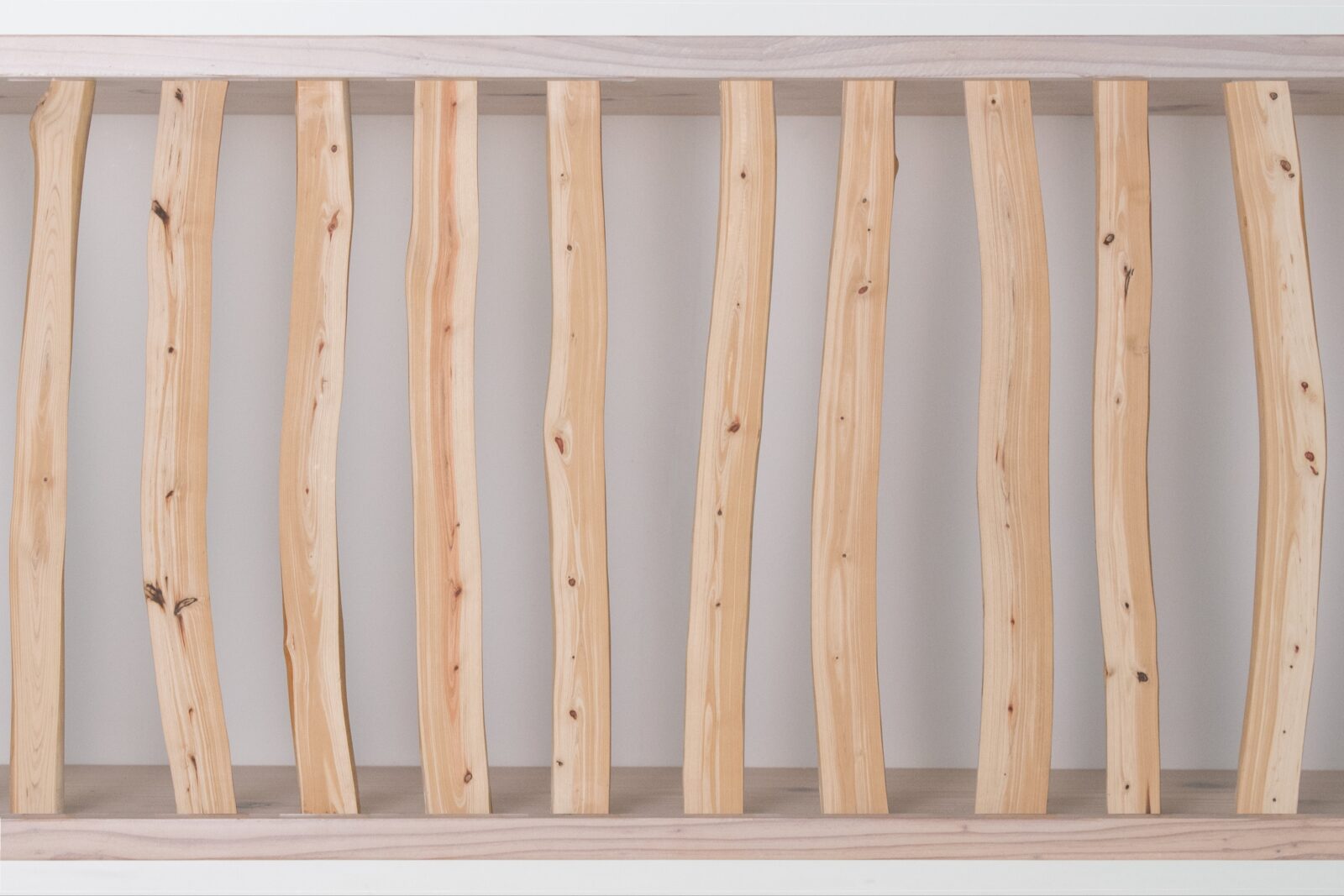
Kintoun Kits Moulding set
Japanese industrial designer Taishi Sugiura comes from Nagoya University of Arts. Sugiura’s Design is focused on the properties of materials, leading to the discovery of new uses. Apart from functionality, the designer also aims to nurture emotions and sensitivity in his work. The SIT Furniture Design Award already recognised the ingenuity of the Hayashi cabinet.
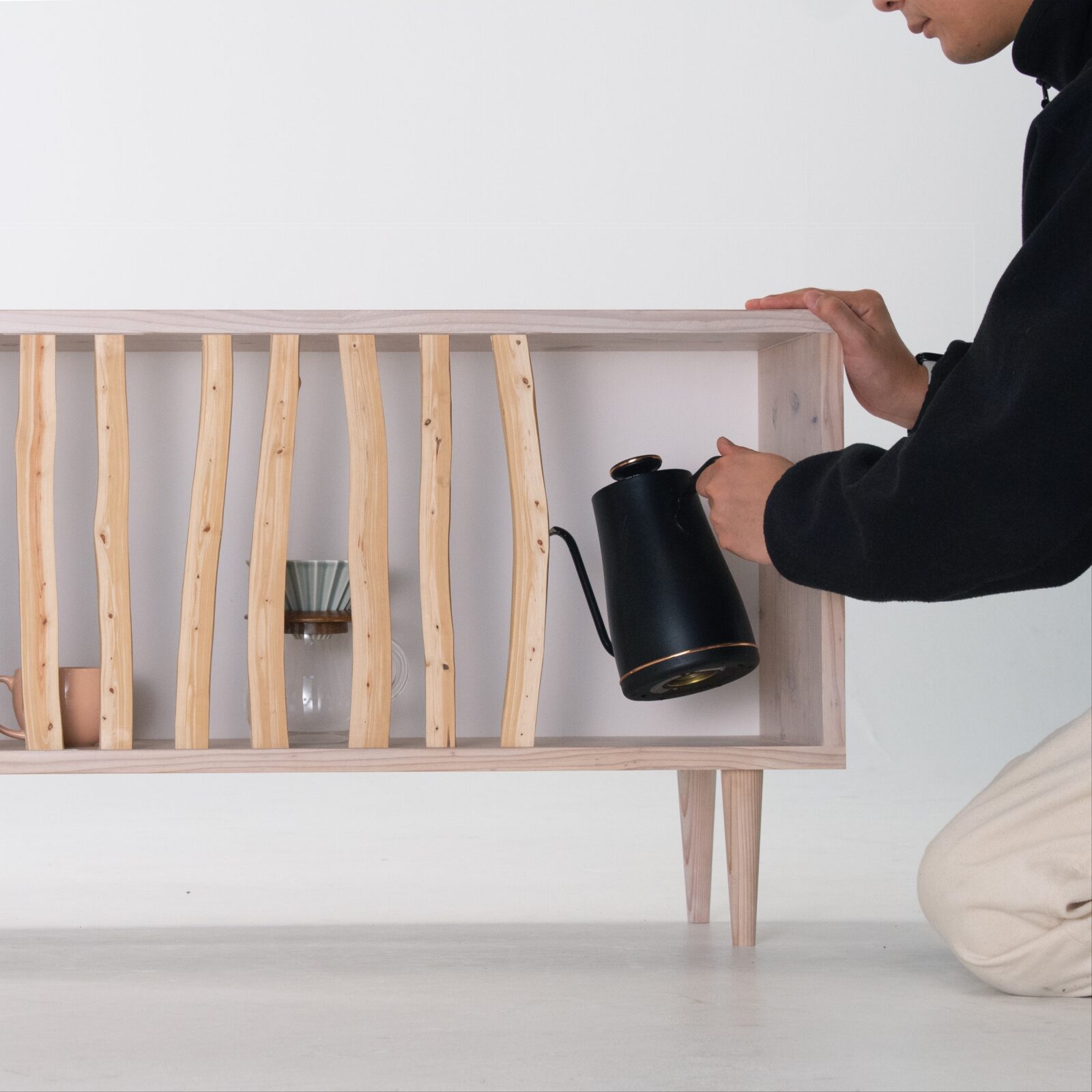
Previously, Taishi has won second place at JID (the Japan Interior Designers’ Association AWARD NEXTAGE) for the Kintoun Kits design. This moulding set made for kids lets youngsters create their own furniture by spraying urethane foam onto the frame’s metal parts. The set contains plastic wheels (with and without the hook), bolts, rope, a balloon, a pump, plastic blocks, and two cans of urethane foam with an application gun. Children can easily use this set to create rocking chairs, vehicles, pushchairs, and many other interesting designs by combining the toy parts and adding foam spray. The simple design makes repairs easy. Apart from the JID NEXTAGE silver prize, Kintoun Kits has also received an honourable mention at IDA (The International Design Awards).
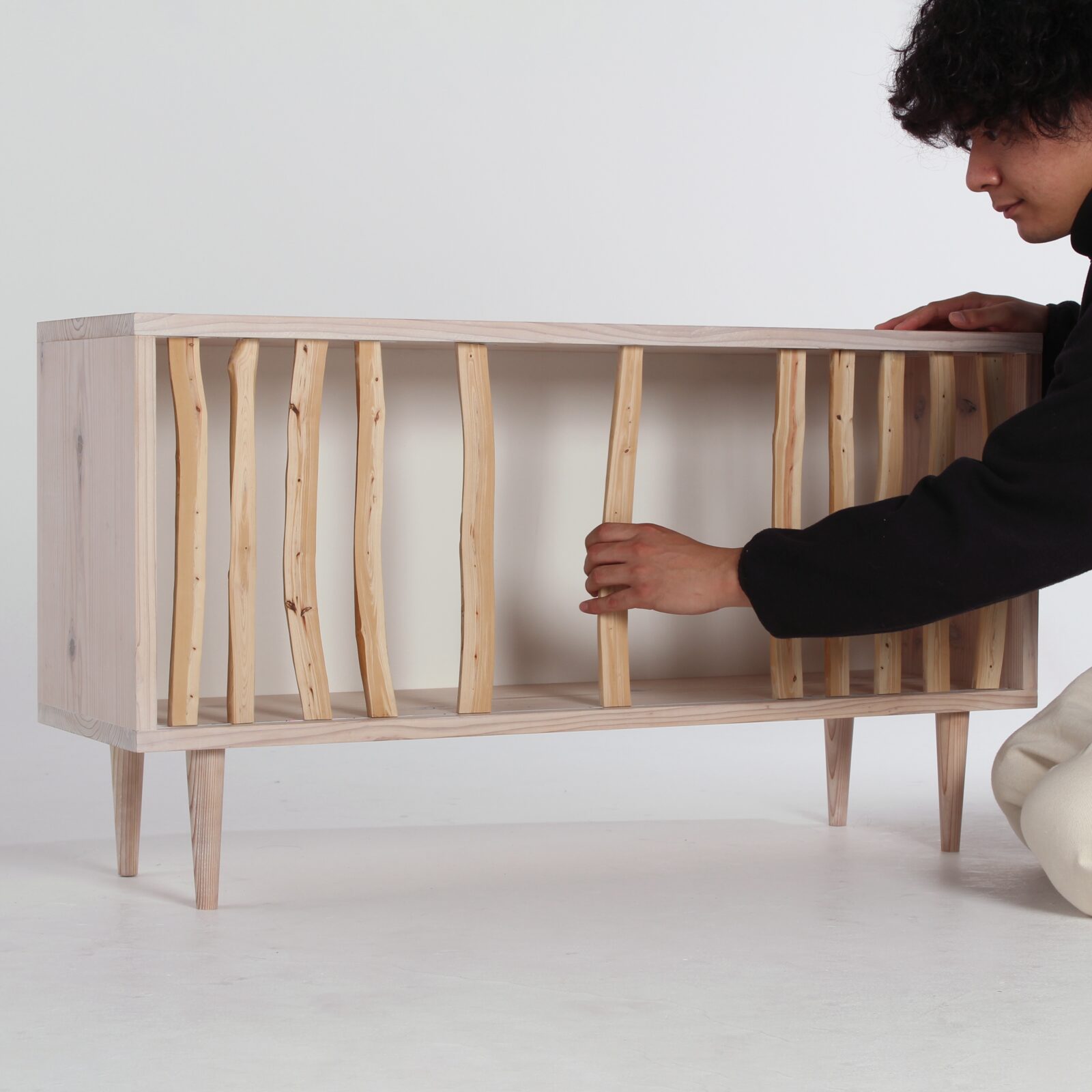
Photo credit: Taishi Sugiura





